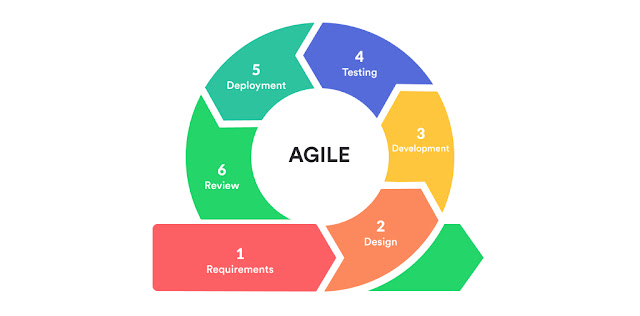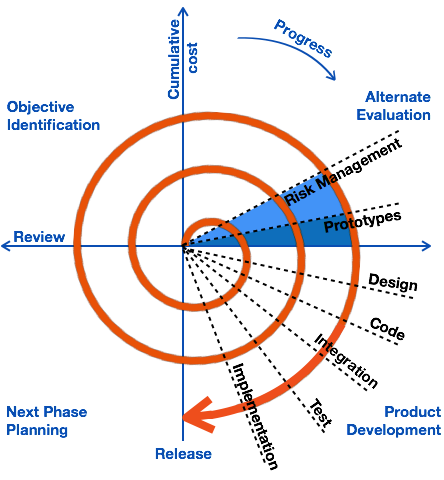What is software outsourcing and how significant is it?
Organizations all across the world use outsourcing in a variety of regular business operations. Many IT companies apply software outsourcing as a powerful tool to improve operational efficiency and output quality in the era of quickly changing information technology. This article gives you information about software outsourcing so that you can better grasp what it is and how crucial it is in the modern IT sector of today.
 |
| Entrepreneurs and business owners can find efficient answers to their business difficulties by Software Outsourcing with IT talents from across the world |
The field of information technology has long been considered to be the crucial one of the future. More businesses and organizations are starting to understand how important IT is thanks to the COVID-19 epidemic and the growing digital transformation. Numerous IT professionals are very important to businesses in the IT sector or other industries to run information processing tasks and oversee software development projects.
In the world of today, as the economy grows and consumer behavior always changes, businesses must adapt to changing consumer demands and employ a large workforce in the field of technology. Consequently, businesses need for IT personnel is rapidly growing as well. Many nations are willing to hire workers in nations like Vietnam, India, the Philippines, or China in order to reduce costs, leading to a significant change in the structure of the workforce over time.
 |
| Software outsourcing is a powerful approach to improving operational efficiency and output quality |
Contrary to the rising need for IT workers, there is still a severe dearth of labor in this industry despite the excellent pay. Since many Vietnamese talents have been attracted to and hired by multinational software project outsourcing companies in the USA, Japan, EU, and Singapore, the absence of high-quality IT people resources has emerged as an urgent issue for domestic businesses.
Businesses are currently undergoing a phase of rising demand for digital transformation, which is fueling an increase in software engineering outsourcing initiatives globally. The best course of action for enterprises in this situation is to seek collaboration with a third party, which we refer to as outsourcing software development partners. It is when local human resources cannot adequately address the problem of quantity and, to some extent, quality.
 |
| Many nations are willing to hire IT workers in nations like Vietnam, India, the Philippines, or China, which we refer to as outsourcing software development partners |
In addition, as businesses in the technology industry have recently increased the size of their operations and operations, the demands on human resources workers have also increased. Entrepreneurs and business owners can find efficient answers to their business difficulties by locating IT talent from across the world.
What exactly is software outsourcing then? In the following parts, we shall learn more.
What is Software Outsourcing?
 |
| Software outsourcing is the act of handing over responsibility for the creation of software to a third party |
A business can contract with a third party that has the time, expertise, and resources to meet its business needs to complete a software project. In addition, technology is developing at a rapid rate, spurring the creation of new technologies. During such a time, a new invention can quickly become outdated. As a result, many companies decide to outsource in order to grow quickly and get a competitive edge in their sector. How then software outsourcing services should be understood?
Outsourcing, in its simplest form, is a business practice in which a third party is engaged to oversee and carry out each step of the manufacturing process using that third party's human resources. Technology companies outsource a wide range of services such as software, equipment parts, graphic design, and even quality assurance outsourcing.
 |
| Thanks to software outsourcing, companies can carry out company growth and digital transformation efforts |
A software project is outsourced when you hire someone to complete some or all of the work rather than doing it yourself. The offshore software development company's responsibility is to deliver software that satisfies the needs of the client and it does not participate in the business development process. Outsourcing is therefore considered a step in the process of developing and enhancing consumer services.
Due to its useful advantages for businesses, such as time and resource savings, expertise and product quality optimization, cost reduction, etc., outsourcing is increasingly popular nowadays.
Simply put, Software outsourcing is the act of handing over responsibility for the creation of software to a third party. Because of this, companies may carry out company growth and digital transformation efforts, which will aid them in overcoming their lack of internal expertise and resources.
Why is it necessary to do software outsourcing?
 |
| Software outsourcing is a considerably cost-effective option in this rapid change era of Technology |
When information technology is developing quickly and there is such high demand, software outsourcing is crucial for enterprises.For a variety of reasons, many companies view outsourcing as an effective way to advance and increase the economic efficiency of their business operations:
Access to worldwide IT talents and experts
Every part of the world is seeing an increase in the number of IT businesses, and they all have strengths in a wide range of platforms and technologies. The skills and knowledge of the programmers in those software outsourcing companies may teach you a lot in a number of different ways. In-depth knowledge in a particular area of the outsourced projects you pursue will be available from these professionals.
Increase effectiveness and productivity
You can do more critical work with higher efficiency and productivity by outsourcing application development so that your internal IT personnel can focus on other important tasks.
Additionally, by working with a development team from software testing outsourcing companies, businesses can free up time to concentrate more on their core business concepts and activities, such as branding, research, and development, in order to deliver cutting-edge solutions and value to their customers without having to worry about technical issues.
It may be said that widespread access to IT talent enables staff members of companies to advance their knowledge and skills. Additionally, the outsourcing team offers considerable advantages to businesses outside the IT sector by consulting with industry specialists and keeping up with the latest technological developments.
Greatly cut back on spending
According to Deloitte's Global Outsourcing Survey, cost-cutting is the main reason why companies partner with an outsourcing development company.
Cost is undoubtedly influential and essential, even though it is not usually the most crucial consideration in outsourcing decisions. As you don’t have to spend money on training your team if the programming is beyond their scope, outsourcing development lowers the overall cost of the project. Additionally, if you don't have your own IT personnel, you can outsource your needs for a reasonable price.
Opportunity to access cutting-edge technology
Software applications can be written in a wide range of programming languages for use on a wide range of operating systems. It is unreasonable to expect all programmers to be experts in everything in an industry as big as IT.
Outsourcing is an excellent approach to fill the gap if your team isn't knowledgeable about a certain technology. It can be challenging to keep your team up to date with everything because new technology is launched frequently.
Ensure the desired results
Contracts with independent outsourcing developers that are not employees of the organization boost accountability for meeting deadlines and staying within predetermined spending limits. To maintain outsourcing software development projects on schedule, it is the responsibility of outsourced teams to assess resource availability and make necessary adjustments. It might be believed that outsourcing all or a portion of a software project to a third party who are knowledgeable in software and information technology is entirely fair if businesses lack human resources for in-house software development.
To sum up, while a large team of employees would require a significant monthly wage for a company with little resources and no IT knowledge, outsourcing is a considerably more cost-effective option. The answers to what kinds of outsourcing there are and how effective each one is may be found in the next section.
What are the common types of software outsourcing?
 |
| There are many viable options for IT outsourcing |
Without adding more staff, you can locate a wide choice of services through software engineering approaches for offshore and outsourced development to enhance operations at your business. You may be able to do this to acquire talents that your present personnel lacks. Given your wealth of possibilities, it's a good idea to familiarize yourself with the various forms of outsourcing before you begin:
Based on specialized business function
Engineering Process Outsourcing (EPO): Engineering process outsourcing is entrusting a team from outside the company with certain technical duties and responsibilities. For instance, some automakers contract out product development outsourcing to expand their market reach and raise their standards.
Outsourcing information technology (ITO): Some businesses opt to hire outside parties to handle tasks like software development, application development, or technical support.
Knowledge Process Outsourcing (KPO): This strategy involves contracting out key corporate operations including data entry, marketing research, and intellectual property analysis.
Legal Process Outsourcing (LPO): Since not all businesses have a legal department, the majority will eventually outsource their legal needs. Some businesses decide to use outside attorneys to draft contracts, provide legal counsel, and resolve legal disputes.
Recruitment Process Outsourcing (RPO): To locate new hires, many businesses contract with external firms or headhunters. They will take over the functioning company's job of attracting, vetting, interviewing, and selecting qualified candidates.
Human Resource Outsourcing (RHO): If necessary, HR operations including payroll, background checks, updating policy manuals, benefits, and HR administration can all be outsourced.
Based on geographical location
Local Software Outsourcing: Businesses decide to work with outsourcers based in the same nation. For instance, if a Vietnamese company chooses the local model for quality assurance purposes, the firm may be able to partner with a local software QA company nearby or in other regions of Vietnam.
Offshore Software Outsourcing: Businesses work remotely with outsourcing firms headquartered in foreign nations, but extremely far away from one another geographically. For instance, if a company is from the US and chooses the offshore model, it can hire a development company in Vietnam.
Nearshore Software Outsourcing: Businesses collaborate with outsourcers operating in nearby nations. For instance, if a Singapore-based business thinks about choosing a nearshore software development company, the company can hire IT personnel from Vietnam.
Based on People Management
Staff Augmentation Outsourcing Model: This model enables companies to acquire temporary staff from outside sources or enter into short-term agreements with them to provide a set number of workers for a predetermined time period. In this arrangement, workers are hired to work for the company, which means the company still has control over the project.
Dedicated Team Outsourcing Model: Under this approach, a third party will offer firms a team of professionals that operate remotely. However, compared to the employee increase approach, the company won't have as much control over the project.
Project-based Outsourcing Model: With this model, organizations entrust third parties with complete project management and development. You only need to provide your specifications and requirements. This enables you to completely concentrate on your business while being ready for when the job is finished.
The most popular software development models for outsourcing
The market currently offers a wide variety of software development and outsourcing models. These models include, among others:
Waterfall model for software outsourcing
 |
| When employing the waterfall model for software outsourcing, the steps and actions are well-defined, ensuring early discovery of errors |
Waterfall project management is a method that divides the software development life cycle (SDLC) into distinct phases such as requirements gathering, analysis and design, coding and unit testing, system and user acceptance testing, and deployment. When using this method, specialized tasks completed in one phase must be reviewed and verified before moving on to the next phase. By employing this method, engineers can improve their design and easily cost estimation.
A lot of software producers opt for this model type. This kind of paradigm can result in fluid, high-quality, and manageable software. The stages of development are also fairly transparent and error-free. The drawback is that you have to start over if you make a mistake at any phase.
Advantages:
Easy to use, easy to access.
The steps and actions are well-defined, ensuring early discovery of errors.
Disadvantages:
It's challenging to return to a stage after it's finished.
It offers limited flexibility.
Adjustment range might be difficult and expensive.
Agile Model for Software Outsourcing
 |
| Produce high-quality software in the shortest amount of time while maintaining customer satisfaction is one of the advantages of the Agile model for Software Outsourcing |
Agile Outsourcing methodology is a software project development process based on principles that prioritize customers and flexibility. Instead of planning the entire project, it divides the development process into small increments that are accomplished in iterations. Each iteration includes all SDLC phases. A new or updated product is released after several iterations. When the customer expects the development team to quickly respond to updated requirements, the Agile development method will be a suitable approach.
Unlike Waterfall, this model can easily remedy faults. The iterative nature of this methodology lowers the risk associated with product development. The project management procedure is very practical and simple to follow. Agile, however, necessitates that programmers possess a strong technical foundation. It could be challenging for new programmers to implement the agile paradigm.
Advantages:
Decrease the time required to utilize some system functionalities.
Produce high-quality software in the shortest amount of time while maintaining customer satisfaction
Disadvantages:
Relies on the software developer's expertise.
Require a team with experience.
V model for Software Outsourcing
 |
| Software Outsourcing by the V model is effective for small to medium-sized projects |
Small-scale project initiatives can use this concept. The V model is easy to use and suited for programmers of any expertise level. In most cases, all of the execution phases finish simultaneously. The drawback is that it cannot be used for significant tasks that call for sophisticated methods.
Advantages:
The management and development processes are structured and methodical.
Effective for small to medium-sized projects.
Offshore software testing begins early in the development process, defining ambiguity from the outset.
Simple to manage because each phase has objectives and goals that are clearly stated.
Disadvantages:
Unsuitable for extensive and complicated projects
Unsuitable if requirements are subject to frequent change.
The intermediate stage does not result in any functioning software.
There is uncertainty and risk since there is no provision for risk analysis.
Spiral model for Software Outsourcing
 |
| Cost and deadline estimates are quite accurate with the spiral model for software outsourcing |
A risk-driven software development process is the spiral model. The combination of other models' advantages and the earlier models' capacity for problem-solving still persists. The spiral model gives a mechanism to implement components of one or more treatment models based on the unique risk models of each project.
Advantages:
Combining advantageous characteristics and overcoming disadvantages of several different development approaches.
Projects may be efficiently and easily monitored.
Align the project with the potential for modifications throughout project implementation to limit risk
Cost and deadline estimates are quite accurate.
Disadvantages:
Risk analysis is very pricey. Mainly applied to large projects with financial potential.
Constantly changing requirements produce endless iterations that are extremely complex and call for a team of risk analysis specialists.
When working on a project, software development models give you the tools and resources you need to accomplish your objectives. You will also be given precise instructions on how to accomplish your goals and remedies when difficulties emerge.
Every software development approach will, in general, have benefits and drawbacks. You can choose the appropriate model type based on the project you're working on.
Common types of contracts in the software outsourcing industry
Time and Materials Model
 |
| An illustration of the time and materials (T&M) model in software outsourcing |
The time and materials (T&M) model is a contract type that is used to reimburse one party based on the time spent on the projects, the materials used, and other fees related to the service being provided. This is also known as a cost-reimbursable contract or cost-plus contract. The T&M model (“pay as you go”) is the best choice when the requirements of a project are not clearly defined at the beginning, especially if the scope of work is likely to change during the development process.
Advantages of Time and Materials Model:
Dynamic scope of work: One of the biggest benefits of this model is that it allows clients to adjust requirements and deploy new features without disrupting the workflow significantly. The involved parties are not obliged to follow the original software project plan under a T&M contract. As a result, they can simply adjust not only the project specifications but also the team size based on their current needs and priorities.
Transparency: Since a fixed-price model just allows the client to participate in the development process during the initial planning phase, customers will have no control over the progress. In a Time and Material contract, the clients will get significant transparency. The customer has total power over the development and can interact directly with the engineer if something goes wrong.
Cost control & Budget flexibility: Cost control and budget flexibility are two more strategic advantages of the T&M model. Customers can effectively plan out their budgets due to clearly defined price units. Furthermore, with a deeper understanding of the entire process, the client can simplify or remove specific elements or functionalities at any time, saving costs and eliminating unnecessary charges.
Fixed-Price Model
 |
| An illustration of the fixed-price model in software outsourcing |
A fixed-price model (also known as a firm-fixed-price model) is a type of contract in which both the customers and the vendors agree on the scope of work, deadlines, and amount of money needed to complete the project before the development process starts. Even though the scope of work is fixed, there's a high possibility you'll need to add some extra features along the way. As a result, deadlines may be pushed back and expenses may arise.
Advantages of the Fixed-Price Model:
Low-financial risks: Fixed-price contracts provide a predictable scenario for the contracting parties, providing both with stability over the life of the contract. Buyers do not have to be concerned about the cost of goods or services rising unexpectedly, disrupting their business plans. The seller is confident that the value of their goods or services will not plunge significantly without warning.
Simple cost estimation: In a fixed-price contract, the amount of time and money that must be spent on the project is accurately and rigorously defined. In other models (time and materials and dedicated team), it is expected that extra requests from clients, recommendations from outsourcing developers, and other factors would arise throughout the working period, all of which are highly unpredictable. That is why estimating web projects is challenging, but not in the case of fixed-price models.
No need to control the process: A fixed-price contract is an ideal choice for customers who don't want to get too involved in the work process. After the initial planning phase, the development team is assigned a detailed route to follow. So, the clients don’t need to handle most of what is happening and they can focus on their core business.
Lab-type Development
 |
| An illustration of the lab-type development model in software outsourcing |
The lab-type development model is a business model that refers to a long-term agreement between the clients and service providers to supply software specialists. These experts are selected based on their experience and skills and the client's needs. The customers can choose to manage the team themselves or engage a project manager from the service supplier to supervise the development process.
Advantages of Lab-type Development:
Cost-Effectiveness: In the lab-type contract, you get the advantages of all the cooperation models. You get flexibility in time and material together with predictability in cost. You can define members and budgets in advance while ensuring project performance and scaling the team size to your needs. In comparison with hiring in-house, hiring a dedicated team for a project is more economical without recruitment and administration worries. This is especially true if you choose an offshore development company in countries with lower rates like Vietnam.
Tight collaboration and control: At NAPA, we ensure a professional team with experience and skillsets meeting your specifications with the required number of people in the specified length of time. They are dedicated to your project, offer you helpful advice, and consider the smallest details that you may have neglected. With this engagement model, you have tight collaboration with the team and control over the project even working remotely. As great things are born in effective collaboration, this model helps to make your long-term planning successful.
Fast-Paced Development Cycle: When it comes to tight scheduling, unanticipated cases, or adjustments in the scope and priorities of the project, this engagement approach is a great choice. With team flexibility and a customer-centric approach, the entire process can be completed at a fast pace than the other models. You can quickly and easily optimize the team size and distribute the workload to serve new goals. All team members are involved in refining workflows, brainstorming solutions, and accelerating the process to meet the schedule.
What are the potential risks of software outsourcing?
 |
| Software outsourcing has significant advantages while also posing significant risks |
Can you think of some of the drawbacks that outsourcing has despite its many benefits? Yes, there have always been two sides to everything, and outsourcing is no different. While working with software projects outsourcing agents has many advantages, there are some highly worrying risks as well, including:
Security issues
The most concerning issue with outsourcing is this one. Since they are not a natural part of the organization, outsourced personnel may divulge private company information. They might even be workers for rival companies. Companies should need outsourcing employees to sign a confidentiality agreement to safeguard their security and safety so that any disputes may be settled by the law.
Information leaking
You won't be able to fully understand the information, data, and human resources when outsourcing. These elements are entirely dependent on the department you are outsourcing to. This aspect is highly concerning because disclosing information to an untrustworthy unit can result in unneeded harm. The two parties must create a detailed agreement that forbids sharing information with any other unit. The requirements are posed, as with other requirements, to prevent misinterpretation of the problem.
Difficult to control the quality
You will be reliant on the team you hire if you outsource. It will be challenging for you to guarantee that the work is proceeding effectively or that the outcome is accurate.
Additionally, since outsourced personnel do not have a thorough understanding of the firm at the beginning of the collaboration, it will be challenging for them to suggest strategic directions and avoid making costly errors.
Cost issues
In general, outsourcing can assist businesses in making short-term cost savings, but this does not imply that outsourcing will result in cost savings if businesses do not have a close agreement and reasonable division of work.
Simply put, outsourcing businesses won't completely eliminate software security concerns when adopting software outsourcing. Since they will also need to collaborate with other partners on their outsourced projects, the information in the program may not be as secure as you would expect.
It is clear that outsourcing is similar to a business in that it can have significant advantages while also posing significant risks. As a result, they have the option to outsource or not, depending on the particular circumstances of their company.
How can software outsourcing & development be efficiently outsourced?
 |
| Choosing software outsourcing requires careful consideration |
The most crucial step for outsourcing to be completed successfully is the evaluation of the service provider. A business must have a comprehensive understanding of outsourcing's purposes, best practices, and primary benefits before selecting to outsource. On the basis of how business practices affect the organization's ability to survive and flourish, the resource allocation for the outsourcing choice process can be evaluated.
An ideal evaluation procedure typically entails the following steps: searching for suppliers, contacting and gathering information from the list of companies located, speaking with customers who have worked with the company, conducting a thorough analysis of their procedures and infrastructure, requesting a financial analysis, and finally choosing a service provider.
However, choosing to outsource also requires careful consideration, and the procedure is likewise extremely different from customary ones. Here are some key procedures you might use when assessing an outsourcing company:
Consider the nation where the service provider is active
Make sure to thoroughly research the political and economic climate of the nation in which the service provider is active, as well as the economic, IT, and political ideologies.
To minimize workplace dangers and forecast the country's outsourcing market's future, you should comprehend the local legal framework. Because the macro environment of economic and political policies will considerably affect the viability as well as financial concerns, particularly when outsourcing, you can refer to the pertinent data offered by independent organizations.
Understand the business offering the service
You must have a thorough understanding of the outsourced company's goals, objectives, vision, and mission. You should be persuaded by their short-, medium-, and long-term business philosophies because, after all, you don't want to have to switch suppliers very frequently.
Corporate governance-related aspects frequently decide whether outsourcing is successful. The alignment of objectives will undoubtedly result in long-lasting cooperation. As a result, you should assess whether the service provider company is prepared to accept the release of its standards and procedures.
SWOT evaluation
Please thoroughly examine each applicant's credentials, technological background, privacy, quality management procedures, security measures, and other pertinent details of the service provider organization.
Your long-term engagement will depend on a number of other factors, including risk management and backup measures. This step entails visiting potential employers to determine if they are a good fit for your position.
Analyzing finances
The goal of every outsourcing decision-making is to reduce costs without compromising product quality. Based on the entire cost compared to the anticipated aim, financial analysis should be conducted. Consider financial risks based on the backup plan that the supplier firm has approved.
And make sure you choose a trustworthy service provider
The process of reviewing service delivery cases will be concluded by a contract. In order to accomplish this successfully, the contract must explicitly outline the parties' respective duties and responsibilities, work schedules, financial details, payment options, and other crucial clauses. Additionally, a standard of service provision and a termination clause should be included in the agreement.
Vietnam – An ideal software outsourcing & development destination
 |
| Vietnam has consistently ranked in the Top 10 nations in the world for software outsourcing |
Vietnam is becoming more and more advanced in information technology. Additionally, IT professionals are becoming more qualified and better suited to the demands of the labor market. Additionally, outsourcing businesses in Vietnam are always growing and improving conditions that help IT staff members enhance their skills and advance their careers.
Vietnam has consistently ranked in the Top 10 nations in the world for software outsourcing, according to software development outsourcing statistics for the past few years. According to Gartner – An American technology research and consulting firm, Vietnam is one of the leading developing foreign software outsourcing sites in the Asia-Pacific region.
It may be claimed that this presents a significant potential and challenge for the nation in terms of continuing to develop a skilled labor force and luring foreign investment sources. In recent years, the government has also worked on special initiatives to make Vietnam a powerful nation in this area.
China and India presently have the lion's share of the outsourcing market and are referred to as "the world's factories" in the industry. Vietnam is as competitive despite its later development. Young people resources, hardworking employees, and a rapid grasp of technical advancements are just a few of the advantages Vietnam has over these other nations.
 |
| Custom software development outsourcing companies in Vietnam have many bright futures for development in the future |
Vietnam is shown rapid growth in IT in general and outsourcing in particular, moving up from 19th to 10th in A.T. Kearney's ranking of the most attractive nations for outsourcing that was released in 2019.
As stated by the General Statistics Office (GSO) – an affiliated division of the Ministry of Planning and Investment (MPI) Viet Nam, Vietnam's market for software outsourcing has recently displayed encouraging trends. In the first four months of 2022, there were 10.8 billion USD in total registered foreign direct investment (FDI) in Vietnam, with Binh Duong accounting for 2.3 billion USD (or 21.7% of the total registered capital), Bac Ninh for 1.6 billion USD (or 14.5%), Ho Chi Minh City for 1.3 billion USD (or 11.8%), etc. This represents an increase of 7.6% over the same period in 2017.
From there, it shows that custom software development outsourcing companies in Vietnam have many bright futures for development in the future.
Opportunities and challenges for Vietnam in the field of software outsourcing
 |
| The lack of IT human resources presents an excellent opportunity for developing nations like Vietnam |
Vietnam currently ranks among the top nations with the largest processing market worldwide. For the S-shaped nation, this is both an opportunity and a challenge in this highly intellectual field. India is a leader in the software outsourcing industry and has a staff of youthful, energetic, and English-fluent workers. Additionally, China, which is next door and has a population of more than 1 billion, is a well-known name in the sector.
The issue raised here is that more and more projects are landing, so where can you acquire the human resources with excellent force to fulfill all the wants of different countries? It won't be noteworthy till all outsourced projects are flocking to the industry giants. While it is a challenge for developed nations like China or India, it presents an excellent opportunity for developing nations like Vietnam.
As we can see, there is a new opportunity for investors to quickly implement their investment strategies because human resources in the outsourcing industry are extremely young and the cost is low. We still need more time to understand and investigate new formulas and operating principles that can be compared to India's huge power, even though the industry of software outsourcing has made good progress.
What is the future trend of software outsourcing & development?
 |
| Over the next years, outsourcing is probably going to keep expanding |
The use of outsourcing software development services is expanding. It is not surprising that big and small businesses are utilizing this trend because development outsourcing enables them to cut expenses and accelerate the time to market their products.
Over the next five years, outsourcing is probably going to keep expanding, and it's more probable that some industries will seize this chance than others. The top 5 trends in outsourcing for the ensuing 5 years are as follows:
High demand for IT human resources
A survey by Deloitte revealed that global organizations continue to increase the outsourcing of technology human resources. Additionally, the majority of these firms want to keep doing or expand their outsourcing of human resources. Companies can cut expenses and reallocate internal personnel to better-suited duties by outsourcing everything from hiring new staff to managing tiresome corporate tasks.
The rise of smart products
Consumers are changing their behaviors quickly, and they are raising their expectations more quickly than the pace of production can keep up. Consumers after COVID-19 desire a better life, thus everything they purchase must be valuable. In order to find solutions, manufacturers must interact more with consumers.
Manufacturers won't just concentrate on ideas like Big Data and IoT in the coming years; they'll also do more with the data they already have. They will employ it to create smarter goods, provide broader packages of services and advantages, and continuously gather data on how to adapt in response to changing consumer preferences and usage patterns. Manufacturers should consider the complete ecosystem instead of just the product.
Product designers will need to focus entirely on the customer experience. They will require a source of customer and vendor input & analytics to understand what the data is telling them, and tools to apply what they learned to the design rather than concentrating on new features and advantages.
Machine learning
Computers may learn on their own thanks to machine learning, a subfield of artificial intelligence (AI). Many companies invest billions in this technology because it has enormous potential in sectors including healthcare, finance, and high tech. In the coming years, businesses will seek outsourcing possibilities due to the huge power of machine learning technology and the expensive cost of manufacturing products based on AI.
Blockchain application
In recent years, under the spotlight of blockchain, data exchange and security for management, supply chain optimization, and healthcare services have actually improved living quality. A more conducive environment for the use of blockchain in straightforward supply chains is created by more digitization and deeper financial technology (Fintech) penetration.
Government organizations are also using blockchain more and more for their operations, moving from skepticism to adoption of the technology. As a result, it is anticipated that blockchain-related legislation would become more apparent. According to observers, opening an account with a traditional bank will probably be as simple as utilizing blockchain in five years.
To Conclude
In this article, I have given a general summary of the existing and future growth of the software outsourcing industry. With experience and a team of skilled and motivated programmers who have collaborated with several domestic and international partners, the company is ready to offer software outsourcing & development solutions in Vietnam.software development outsourcing companies
software projects outsourcing agents
software project outsourcing companies in the USA
software development in-house
software development outsourcing statistics
Image sources: Internet









Comments
Post a Comment